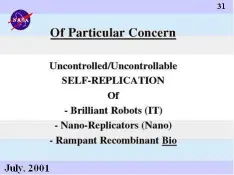 The key to defining your legal character is the word “person”. Regulations created by government agencies and statutes and/or ordinances passed by elected legislators are all written for legal “persons”. Therefore it is crucial that we understand what a “person” is . . . and what it is not. Here are legal definitions:
The key to defining your legal character is the word “person”. Regulations created by government agencies and statutes and/or ordinances passed by elected legislators are all written for legal “persons”. Therefore it is crucial that we understand what a “person” is . . . and what it is not. Here are legal definitions:
Federal Register and the Code of Federal Regulations (44 U.S.C. Chapter 15 § 1501.Definitions
”person” means an individual, partnership, association, or corporation (4 artificially created legal entities – not one a living being!)
California statutes:
Government code Section 1-26
17. “Person” includes any person, firm, association, organization, partnership, limited liability company, business trust, corporation, or company (9 artificially created legal entities – not one a living being!)
Ohio statutes:
Statutory definitions 1.59
(C) “Person” includes an individual, corporation, business trust, estate, trust, partnership, and association (7 artificially created legal entities – not one a living being!)
Uniform Commercial Code Article 1 – General Provisions
Sec 1-201 General Definitions
(27) “Person” means an individual, corporation, business trust, estate, trust, partnership, limited liability company, association, joint venture, government, governmental subdivision, agency, or instrumentality, public corporation, or any other legal or commercial entity. (14 artificially created legally created entities – not one a living being!)
Legal “persons” are not flesh and blood living men and women.
Proof that our laws/statutes are written for legal fiction “persons” and corporations – not for flesh and blood living men and women – can also be found in the legal process by which courts interpret and apply statutory legislation. Sometimes statutes have straightforward meanings, but in many cases, there is some ambiguity or vagueness in the verbiage that must be resolved by a judge. To interpret applicability, judges use various tools and methods, including traditional canons. The judiciary may apply rules of interpretation both to legislation enacted by the legislature and to delegated-legislation such as administrative agency regulations.
Here are three prominent rules considered by judges when they interpret the applicability of statutes/rules:
1) ejusdem generis – rules only apply to persons or things of the same kind or class.
Of the same kind, class, or nature. In statutory construction, the “ejusdem generis rule” is that where general words follow an enumeration of persons or things, by words of a particular and specific meaning, such general words are not to be construed in their widest extent, but are to be held as applying only to persons or things of the same general kind or class as those specifically mentioned.
2) expressio unius est exclusio alterius – one thing having been mentioned, the other is excluded
Is a rule of construction, applying both to statute and legal writings, that states that one thing having been mentioned the other is excluded. Thus, following this rule, ‘no dogs allowed’ means that lions are allowed but guide dogs are excluded.
3) noscitur a sociis – meaning understood from accompanying words
Means comprehended from accompanying words, perceived from accompanying words, realized from accompanying words, recognized from accompanying words, understood from accompanying words
If any or all of these rules are applied to federal regulations, state statutes and the Uniform Commercial Code, it becomes even more apparent that they are not written for living men and women. Corporations are chartered, regulated and taxed by the State, therefore they must use the same legal definition for their customers.
In America the states have authority over relevant matters in their respective jurisdictions, unless the state’s definitions of their statutes conflicts with those recognized federally. This explains why both California and Ohio define “persons” almost identically with the Federal Register and the Uniform Commercial Code.
While the term “character” includes both men and persons, the
way the term “person” is used in statutes – preceding a list of non-living
legal entities – precludes it from referring to living men and women . . . unless the Uniform Commercial Code rule regarding “presumption” is applied! It is presumed that you and I have agreed to represent the non-living legal-fiction “person”, unless we rebut that presumption.
§ 1-206. Presumptions.
Whenever the Uniform Commercial Code creates a “presumption” with respect to a fact, or provides that a fact is “presumed,” the trier of fact must find the existence of the fact unless and until evidence is introduced that supports a finding of its nonexistence.
The difference between legal “persons” and men (or women) is as significant as the difference between life and death and they are expressed differently. JOHN DOE and JANE DOE are “persons”, John Doe is a man and Jane Doe is a woman!
legal “persons” can’t walk
legal “persons” can’t talk
legal “persons” have no gender
Section 1-106. Use of Singular and Plural; Gender.
In the Uniform Commercial Code, unless the statutory context otherwise requires: (1) words in the singular number include the plural, and those in the plural include the singular; and (2) words of any gender also refer to any other gender.
In legal-land, “persons” aren’t real – they are artificially created legal entities/corporations!
One way to rebut the presumption that we have agreed to be a non-living legal-fiction person is to post a Notice of Condition Precedent.








